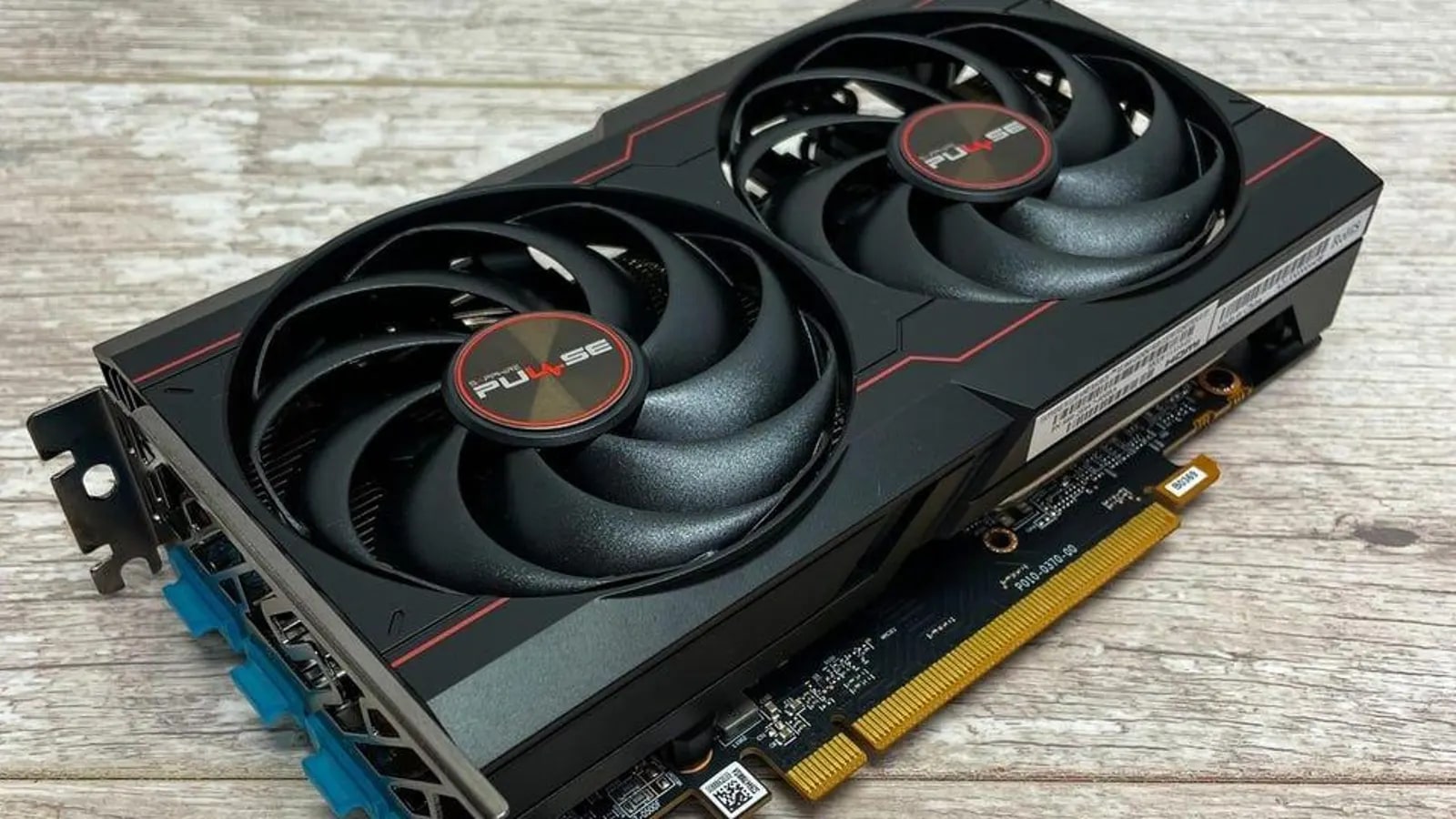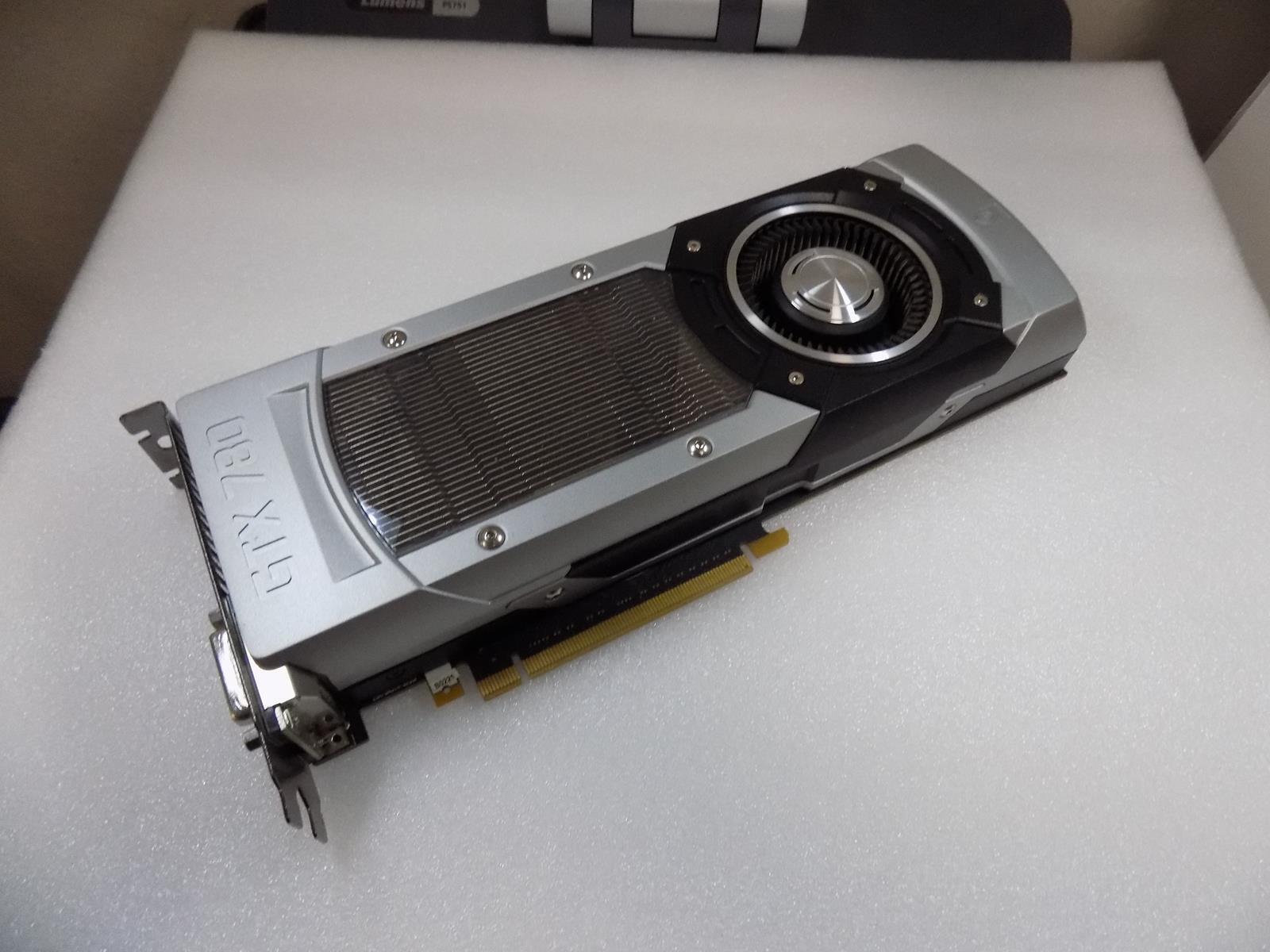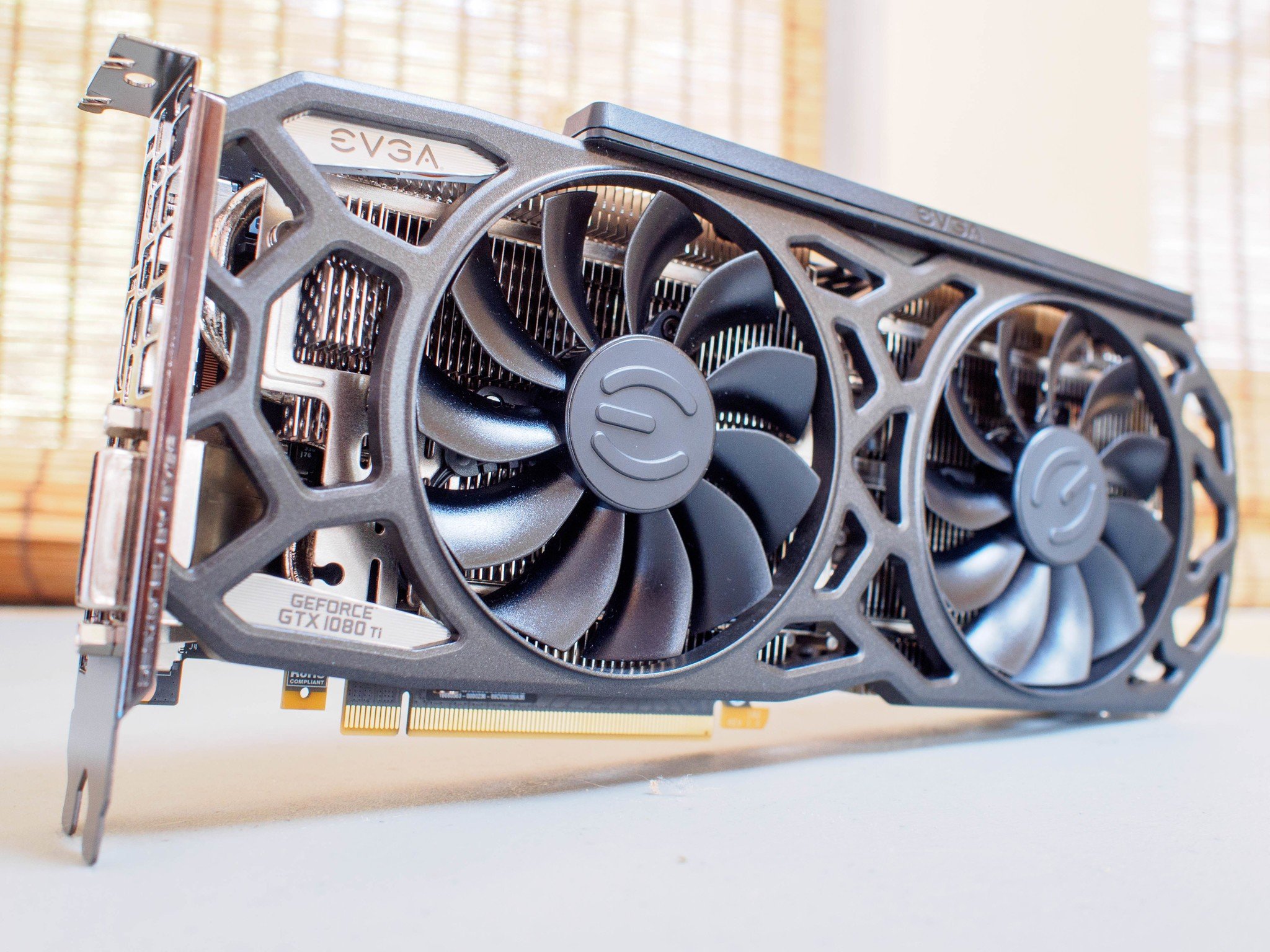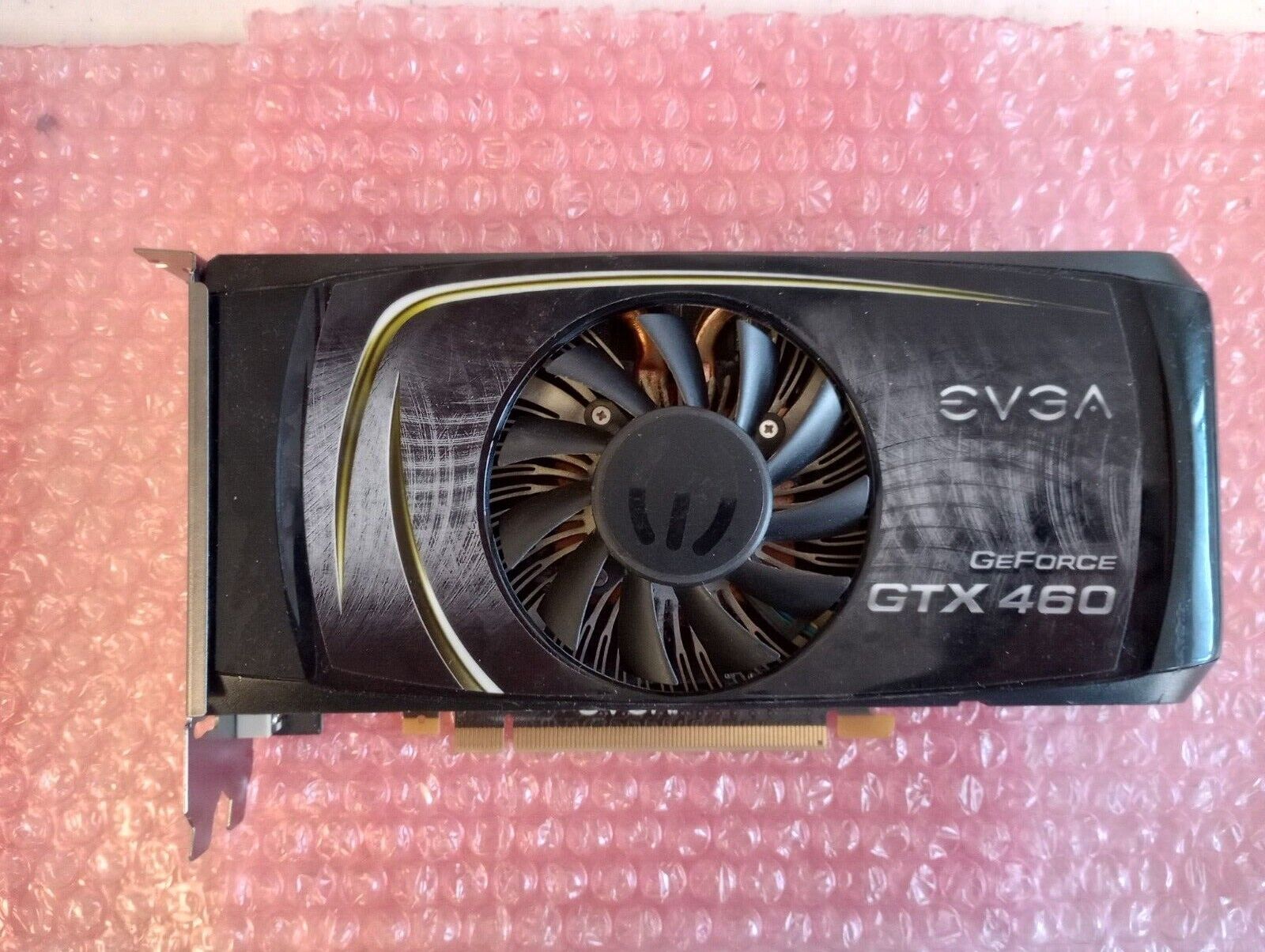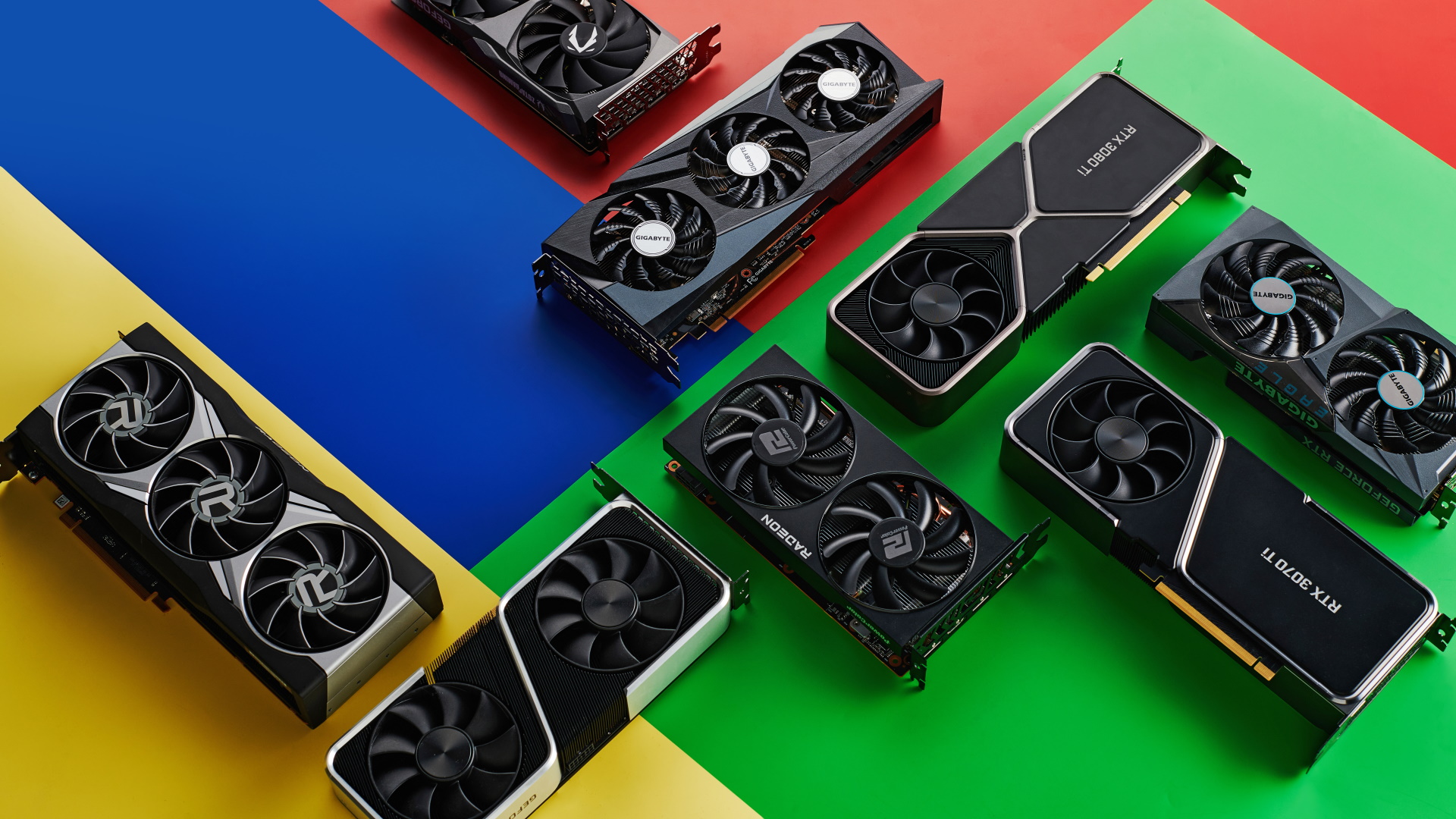Introduction
Welcome to the world of banking, where convenience and security go hand in hand. In recent years, technological advancements have revolutionized the way we handle financial transactions, making it easier than ever to manage our money. One term that frequently comes up in the realm of banking is MID, which stands for Merchant Identification Number. But what exactly is a MID and what role does it play in the banking industry?
A Merchant Identification Number (MID) is a unique identifier assigned to a merchant by an acquiring bank or payment processor. It serves as a means of distinguishing one merchant from another in electronic payment processing. In simpler terms, it acts as a digital ID for merchants, enabling them to accept and process electronic payments securely.
The use of MIDs has become increasingly important in today’s digital era, as more businesses are moving towards online and mobile payment solutions. From small businesses to large corporations, having a MID is essential for merchants who want to expand their customer base and offer convenient payment options.
But what are the benefits of having a MID in the banking world? Let’s take a closer look.
What is MID?
The Merchant Identification Number (MID) is a unique identifier assigned to a merchant for electronic payment processing purposes. It is a crucial component of a merchant’s payment infrastructure and serves as a digital identification for facilitating secure transactions.
MIDs are typically issued by acquiring banks or payment processors to merchants who wish to accept electronic payments from customers. This identification number helps in identifying and tracking the transactions initiated by the specific merchant.
When a customer makes a purchase, whether online or in-person, the MID enables the merchant’s payment gateway to accurately authenticate and authorize the transaction, ensuring that the funds are transferred securely from the customer’s account to the merchant’s account.
Each MID is unique to a specific merchant and is not transferable. It acts as a digital fingerprint that distinguishes one merchant from another. Without a valid MID, a merchant would not be able to accept electronic payments and would miss out on the opportunities provided by the digital payment ecosystem.
Furthermore, MIDs play a vital role in maintaining the integrity and security of the payment system. By uniquely identifying each merchant, payment processors can monitor and track transactions, minimizing the risk of fraudulent activities and ensuring compliance with industry regulations.
MIDs can be linked to various types of merchants, including online retailers, brick-and-mortar stores, service providers, and even nonprofit organizations. The versatility of MIDs allows businesses of all sizes and industries to participate in the digital economy and provide their customers with convenient payment options.
In short, the Merchant Identification Number (MID) is an essential identifier that enables merchants to accept electronic payments securely and participate in the ever-evolving digital payment landscape.
Benefits of MID in Banking
The use of Merchant Identification Numbers (MIDs) in the banking industry offers numerous benefits for both merchants and financial institutions. Let’s explore some of the key advantages of having a MID:
1. Enhanced Security: MIDs play a crucial role in ensuring the security of electronic transactions. By using a unique identifier like a MID, financial institutions can authenticate and validate the legitimacy of each transaction, reducing the risk of fraud or unauthorized access to sensitive customer data. This added layer of security promotes trust and confidence in the banking system.
2. Streamlined Payment Processing: MIDs enable seamless payment processing for merchants. By integrating a MID into their payment infrastructure, merchants can easily accept and process various forms of electronic payments, such as credit cards, debit cards, and online payment platforms. This convenience not only enhances the customer experience but also improves the efficiency of transaction processing for merchants.
3. Expanded Customer Reach: Having a MID opens up opportunities for merchants to tap into a broader customer base. In today’s digital era, many consumers prefer the convenience of electronic payments over traditional methods. By accepting electronic payments through a MID, merchants can attract more customers and cater to their preferences, leading to increased sales and business growth.
4. Improved Cash Flow Management: MIDs allow for faster and more efficient processing of payments, resulting in improved cash flow management for merchants. With electronic payments, funds are transferred directly from the customer’s account to the merchant’s account, reducing the time and effort required for manual handling of cash or checks. This streamlined process helps businesses better manage their cash flow, enabling them to allocate resources more effectively.
5. Robust Reporting and Analytics: MIDs provide valuable data and insights that merchants can leverage for business analysis and decision-making. Payment processors often offer reporting tools that allow merchants to track sales trends, customer behavior, and other key metrics. This information can be used to optimize marketing strategies, improve inventory management, and enhance overall business performance.
6. Support for Online and Mobile Commerce: As online and mobile commerce continue to grow, having a MID is essential for merchants operating in these spaces. MIDs enable merchants to integrate payment gateways into their websites or mobile applications, providing a seamless and secure payment experience for customers. This capability opens up new avenues for businesses to thrive in the digital marketplace.
In summary, the use of MIDs in banking offers a range of benefits, including enhanced security, streamlined payment processing, expanded customer reach, improved cash flow management, robust reporting, and support for online and mobile commerce. Embracing MIDs enables merchants to stay competitive, while financial institutions can ensure the integrity and efficiency of their payment systems.
How Does MID Work?
The Merchant Identification Number (MID) is a crucial component of the payment processing infrastructure, but how does it actually work? Let’s dive into the details:
1. Application and Issuance: When a merchant wants to accept electronic payments, they apply for a MID through an acquiring bank or payment processor. The application process typically involves providing business information, such as company details, contact information, and payment processing history. After a thorough review and approval, the acquiring bank or payment processor assigns a unique MID to the merchant.
2. Transaction Initiation: When a customer initiates a payment, whether online or in-person, the payment gateway or point-of-sale system captures the transaction details, including the amount, item details, and customer information. This information is then transmitted to the acquiring bank or payment processor for further processing.
3. Authentication and Authorization: The acquiring bank or payment processor securely receives the transaction data and verifies the authenticity and validity of the request. They perform various security checks, such as verifying the cardholder’s information, checking for available funds, and confirming the transaction against any suspected fraudulent activities. If the transaction passes all the necessary checks, it is authorized, and the funds are reserved for the merchant.
4. Transfer of Funds: After the transaction is authorized, the acquiring bank or payment processor facilitates the transfer of funds from the customer’s account to the merchant’s account. This process typically involves settling the transaction in batches, where the accumulated authorized transactions are grouped together and processed for settlement. The settlement can occur on a daily or periodic basis, depending on the agreement between the merchant and the acquiring bank or payment processor.
5. Reporting and Reconciliation: Throughout the transaction lifecycle, MIDs play a crucial role in tracking and reconciling the payment activity. Merchants can access reporting tools provided by the acquiring bank or payment processor to monitor transaction details, sales volumes, chargeback ratios, and other relevant data. This information helps merchants reconcile their records, analyze their financial performance, and identify any discrepancies or issues that need attention.
6. Ongoing Maintenance and Management: MIDs require ongoing maintenance and management to ensure uninterrupted payment processing. Merchants need to keep their MIDs up to date with accurate business information, comply with industry regulations, and maintain a secure payment environment for their customers. Additionally, they should regularly review and analyze their transaction data to optimize their payment processes, identify potential risks, and enhance the overall customer experience.
In essence, MIDs act as a digital identifier that facilitates the secure transmission, authentication, and authorization of payment transactions between customers, merchants, acquiring banks, and payment processors. By following these steps, MIDs enable seamless payment processing and provide a foundation for secure and reliable electronic payment systems.
Types of MIDs
Merchant Identification Numbers (MIDs) can vary based on the specific needs and requirements of merchants. Let’s explore some of the common types of MIDs:
1. Dedicated MIDs: Dedicated MIDs are unique identifiers assigned to individual merchants. They are commonly used by businesses that operate independently and have their own payment processing infrastructure. With dedicated MIDs, merchants have full control over their payment processing and can customize their payment gateway settings according to their specific requirements.
2. Aggregate MIDs: Aggregate MIDs, also known as shared or grouped MIDs, are utilized by payment service providers or aggregators who work with multiple merchants. Instead of each merchant having their own unique MID, all transactions are processed under a single MID. This type of MID is often used by small businesses or individual sellers who do not require a dedicated payment infrastructure.
3. Dynamic MIDs: Dynamic MIDs are temporary identifiers that are generated on a per-transaction basis. They are commonly used in situations where additional security is required, such as for one-time or high-risk transactions. Dynamic MIDs help protect sensitive customer data by ensuring that each transaction is associated with a unique identifier, reducing the risk of unauthorized access or fraud.
4. Terminal MIDs: Terminal MIDs are specific to merchants who process transactions through physical payment terminals, such as point-of-sale (POS) systems or card readers. These MIDs are linked to the terminal device and enable the merchants to accept and process card-present transactions. Terminal MIDs are often used by brick-and-mortar stores or businesses that have a physical presence.
5. E-commerce MIDs: E-commerce MIDs are designed specifically for merchants who conduct business online. These MIDs are integrated with payment gateways or online payment platforms, allowing merchants to accept payments securely via their websites or mobile applications. E-commerce MIDs are essential for online retailers, digital service providers, and any business operating in the ever-expanding world of e-commerce.
6. International MIDs: International MIDs are required for merchants who engage in cross-border transactions or operate in multiple countries. Each country may have different banking regulations and payment processing systems, so international MIDs ensure compliance and smooth payment processing across different jurisdictions. These MIDs help merchants expand their customer reach and cater to a global audience.
It’s important for merchants to determine the type of MID that best suits their business model and needs. Whether it’s a dedicated MID for independent retailers, an aggregate MID for small businesses, a dynamic MID for added security, a terminal MID for card-present transactions, an e-commerce MID for online retailers, or an international MID for global expansion – choosing the right type of MID is crucial for seamless and secure payment processing.
How to Obtain a MID
Obtaining a Merchant Identification Number (MID) is a crucial step for merchants who want to accept electronic payments. Here’s a general overview of the process involved in obtaining a MID:
1. Research Payment Processors: Start by researching and comparing different payment processors or acquiring banks that offer MID services. Look for providers that align with your business needs, such as payment gateway compatibility, pricing structure, customer support, and reputation for security and reliability.
2. Prepare Business Documentation: Once you have selected a payment processor or acquiring bank, you will need to gather and prepare the necessary business documentation. The specific requirements may vary, but generally, you will need to provide documents such as your business license, tax identification number, bank account details, and proof of address.
3. Complete the Application Process: Fill out the application form provided by the selected payment processor or acquiring bank. Be prepared to provide detailed information about your business, including its nature, industry, years in operation, projected sales volume, and any previous payment processing history. The application may also include questions regarding your approach to fraud prevention and customer data security.
4. Undergo Review and Approval: After submitting your application, the payment processor or acquiring bank will review your application and conduct their due diligence. This may include verifying the accuracy of the information provided, running background checks, and evaluating your risk profile. Depending on the provider, the review process may take anywhere from a few days to a few weeks.
5. Sign Merchant Agreement: Upon approval, you will need to review and sign a merchant agreement that outlines the terms and conditions of using the MID. This agreement will include details about fees, transaction processing rates, dispute resolution procedures, and data handling practices. It is crucial to review the agreement carefully and seek legal advice if necessary.
6. Integration and Testing: Once the merchant agreement is signed, the payment processor or acquiring bank will provide you with the necessary information and instructions to integrate the MID into your payment infrastructure. This may involve integrating the payment gateway into your website, installing a point-of-sale system, or setting up a mobile payment solution. Perform thorough testing to ensure that the MID is functioning correctly and securely.
7. Compliance and Ongoing Management: As a merchant with a MID, it is essential to comply with industry regulations and payment card association rules. Stay updated with any changes or updates to these regulations and ensure that your payment processes remain compliant. Additionally, regularly review your transaction data, monitor chargeback ratios, and maintain a secure payment environment to protect your customers’ sensitive information.
Remember, the process of obtaining a MID may vary depending on the payment processor or acquiring bank you choose. It is essential to carefully follow their specific instructions and provide accurate and complete information throughout the application process. By obtaining a MID, you gain access to a secure and reliable payment processing infrastructure, enabling you to accept electronic payments and expand your business’s reach.
Using MID for Payment Processing
The Merchant Identification Number (MID) plays a critical role in facilitating payment processing for merchants. Here are some key aspects of how MIDs are utilized in payment processing:
1. Accepting Electronic Payments: MIDs enable merchants to accept a wide range of electronic payment methods, including credit cards, debit cards, and online payment platforms. By integrating a MID into their payment infrastructure, merchants can ensure a seamless and secure payment experience for their customers.
2. Transaction Authorization: When a customer initiates a payment, the MID is used to authenticate and authorize the transaction. It is the MID that links the transaction details to the specific merchant’s account, ensuring that the funds are reserved for the intended recipient and reducing the risk of unauthorized transactions.
3. Secure Data Transmission: MIDs help facilitate the secure transmission of payment data between the customer, merchant, acquiring bank, and payment processor. By incorporating encryption and other security measures, MIDs ensure that sensitive customer information, such as credit card numbers or personal details, are protected during the transaction process.
4. Payment Gateway Integration: MIDs are typically integrated with a payment gateway, which acts as the intermediary between the merchant and the acquiring bank or payment processor. The payment gateway securely transmits transaction data to the appropriate financial institutions for processing and settlement, allowing for seamless communication and transaction flow.
5. Settlement and Funds Transfer: Once a transaction is authorized, the MID is used to facilitate the settlement process. The acquiring bank or payment processor transfers the funds from the customer’s account to the merchant’s account, typically in a batch or periodic settlement. MIDs play a crucial role in ensuring efficient and accurate fund transfers between parties involved in the payment process.
6. Transaction Tracking and Reporting: MIDs provide merchants with the ability to track and monitor their payment transactions. Payment processors often offer reporting tools that allow merchants to generate transaction reports, analyze sales volumes, reconcile financial records, and identify trends or patterns in customer behavior. This data helps merchants make informed business decisions and optimize their payment processes.
7. Subscription and Recurring Billing: MIDs are essential for merchants who offer subscription-based services or recurring billing options. By using MIDs, merchants can securely process recurring payments and manage subscription-related transactions, ensuring a smooth and uninterrupted service for their customers.
In summary, MIDs serve as a foundation for efficient and secure payment processing. By accepting electronic payments, authorizing transactions, enabling secure data transmission, integrating with payment gateways, facilitating settlement and fund transfers, tracking transactions, and supporting subscription-based services, MIDs streamline the payment process for merchants and provide a seamless experience for customers.
MID and Chargebacks
In the world of merchant transactions, chargebacks can be a challenging aspect to navigate. A chargeback occurs when a customer disputes a charge and requests a refund from their bank or credit card issuer. Understanding how Merchant Identification Numbers (MIDs) relate to chargebacks is crucial for effective dispute resolution. Here’s how MIDs play a role in managing chargebacks:
1. Chargeback Identification: MIDs help identify the specific merchant involved in a chargeback. When a customer initiates a chargeback, the MID is used to track the transaction details and link it back to the merchant’s account. This identification is crucial for merchants to investigate and respond to chargebacks effectively.
2. Dispute Evidence: MIDs enable merchants to provide evidence to support their case when responding to chargebacks. By accessing transaction data associated with the MID, merchants can retrieve important information such as customer details, purchase history, and proof of delivery. This evidence can be used to refute false claims and increase the chances of a successful chargeback reversal.
3. Chargeback Prevention: MIDs can also serve as a preventive measure against chargebacks. By implementing secure payment processing systems and following best practices, merchants can reduce the occurrence of chargebacks. For example, having clear refund policies, providing excellent customer service, and ensuring accurate product descriptions can help minimize customer disputes and potential chargebacks.
4. Chargeback Notification: When a chargeback is initiated, the acquiring bank or payment processor notifies the merchant using the MID associated with the transaction. This notification allows merchants to promptly respond to chargebacks within the designated timeframe, which is essential for dispute resolution and the potential reversal of the chargeback.
5. Chargeback Management: MIDs facilitate the management and resolution of chargebacks. Merchants can use the MID to track the status of chargebacks, gather necessary documentation, and communicate with the acquiring bank or payment processor throughout the dispute process. Effective chargeback management can help merchants protect their revenue, maintain customer relationships, and mitigate potential financial losses.
6. Chargeback Monitoring and Analysis: By analyzing chargeback data associated with the MID, merchants can identify recurring issues and patterns that lead to chargebacks. This data can be used to implement corrective measures, such as improving product quality, enhancing customer support, or addressing potential vulnerabilities in the payment process. Monitoring chargeback trends can help merchants proactively reduce their overall chargeback rates.
7. Chargeback Resolution: Ultimately, the goal for merchants is to resolve chargebacks in a fair and efficient manner. MIDs assist in tracking the chargeback resolution process and help merchants provide the necessary evidence to support their case. By understanding the chargeback reason codes associated with the MID, merchants can tailor their responses and work towards resolving chargebacks successfully.
Effectively managing chargebacks requires merchants to stay vigilant and proactive. By utilizing MIDs to identify chargebacks, gather evidence, prevent disputes, receive timely notifications, manage the process, and analyze data for improvement, merchants can mitigate the impact of chargebacks on their business and maintain healthy customer relationships.
Security Measures for MID
With the increasing reliance on electronic payment processing, ensuring the security of Merchant Identification Numbers (MIDs) is paramount. Implementing robust security measures safeguards sensitive financial data and protects merchants and customers from potential risks. Here are some essential security measures for MIDs:
1. Secure Access Control: Limit access to MIDs by implementing strict access controls. Only authorized individuals within the organization should have access to MIDs and the associated payment processing systems. Implementing strong passwords, multi-factor authentication, and regular access reviews can help prevent unauthorized access.
2. Encryption Techniques: Encrypting data is essential for preserving the confidentiality of sensitive information associated with MIDs. Implement industry-standard encryption techniques to protect transaction data during transmission and storage. Encryption helps prevent unauthorized interception or access to payment information by malicious entities.
3. Tokenization: Tokenization is a security measure that involves replacing sensitive payment information with a unique identifier, or token. This reduces the risk of exposing sensitive data during payment transactions. In the event of a data breach, tokens are useless to hackers since they cannot be reversed to retrieve the original payment data.
4. Regular Security Assessments: Conduct regular security assessments and vulnerability scans of the systems and infrastructure associated with MIDs. This helps identify potential weaknesses or vulnerabilities that could be exploited. Identifying and addressing these issues in a timely manner minimizes the risk of unauthorized access or data breaches.
5. PCI DSS Compliance: The Payment Card Industry Data Security Standard (PCI DSS) outlines security requirements for organizations that handle payment card data, including MIDs. Ensure compliance with PCI DSS guidelines to maintain a secure payment environment. This includes regularly updating software, maintaining secure network configurations, and conducting proper security training for staff.
6. Fraud Detection and Prevention: Implement robust fraud detection and prevention mechanisms to identify and mitigate potential fraudulent activities. Utilize fraud monitoring tools and systems that analyze transaction patterns, identify suspicious activities, and trigger alerts when necessary. Promptly responding to potential fraud can help minimize financial losses associated with fraudulent transactions.
7. Regular Monitoring and Auditing: Continuously monitor payment transactions associated with MIDs and conduct regular audits to detect any anomalies or unauthorized activities. Implement real-time monitoring systems that can identify and flag suspicious transactions, allowing for proactive response and investigation.
8. Employee Training: Educate employees on security best practices and the importance of protecting MIDs and customer information. Regularly train staff members on security protocols, phishing awareness, and common fraud prevention techniques. Encourage employees to report any suspicious activities to the appropriate management personnel.
By implementing these security measures, merchants can enhance the protection of their MIDs and payment processing systems, ensuring the integrity and confidentiality of customer data. Prioritizing security not only safeguards merchants and customers but also builds trust in the payment ecosystem.
Conclusion
Merchant Identification Numbers (MIDs) play a critical role in the world of electronic payment processing, enabling merchants to accept and process payments securely. MIDs act as unique identifiers, distinguishing one merchant from another and facilitating seamless transactions between customers, merchants, acquiring banks, and payment processors. As we have explored, MIDs offer numerous benefits such as enhanced security, streamlined payment processing, expanded customer reach, improved cash flow management, robust reporting and analytics, and support for online and mobile commerce.
To obtain a MID, merchants must go through an application process with an acquiring bank or payment processor. This involves providing necessary business documentation and complying with industry regulations. Once the MID is acquired, merchants can integrate it into their payment infrastructure, allowing them to accept various forms of electronic payments and provide a convenient customer experience.
Merchant Identification Numbers are not just important for payment processing; they also play a crucial role in addressing chargebacks and managing dispute resolutions. MIDs help merchants identify chargebacks, provide evidence for dispute cases, and facilitate effective communication with acquiring banks and payment processors. With proper chargeback management, merchants can protect their revenue, maintain customer relationships, and minimize financial losses.
Security measures are vital for safeguarding MIDs and ensuring the integrity of the payment processing system. Implementing strong access controls, encryption techniques, tokenization, and compliance with industry standards such as PCI DSS enhance the security of MIDs. Additionally, regularly monitoring transactions, conducting security assessments, and training employees on security best practices help prevent fraud and unauthorized access.
In conclusion, Merchant Identification Numbers are an essential component of the modern banking landscape, enabling merchants to participate in the digital economy and offer secure and convenient payment options to customers. By understanding the role and benefits of MIDs, implementing necessary security measures, and effectively managing chargebacks, merchants can navigate the world of electronic payment processing with confidence and success.









